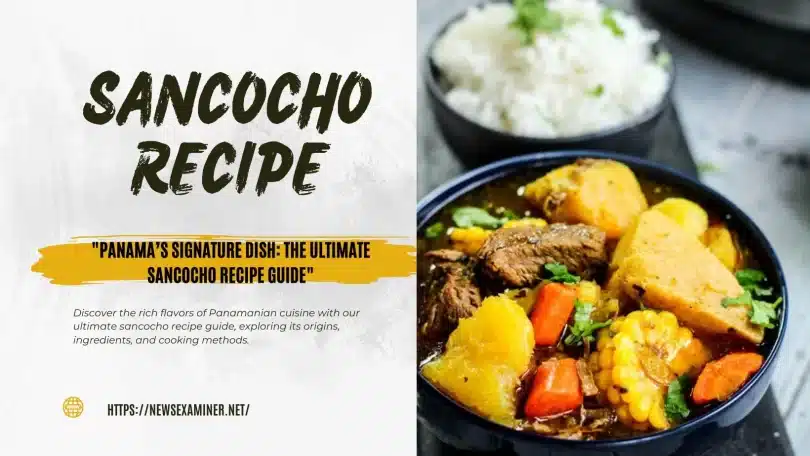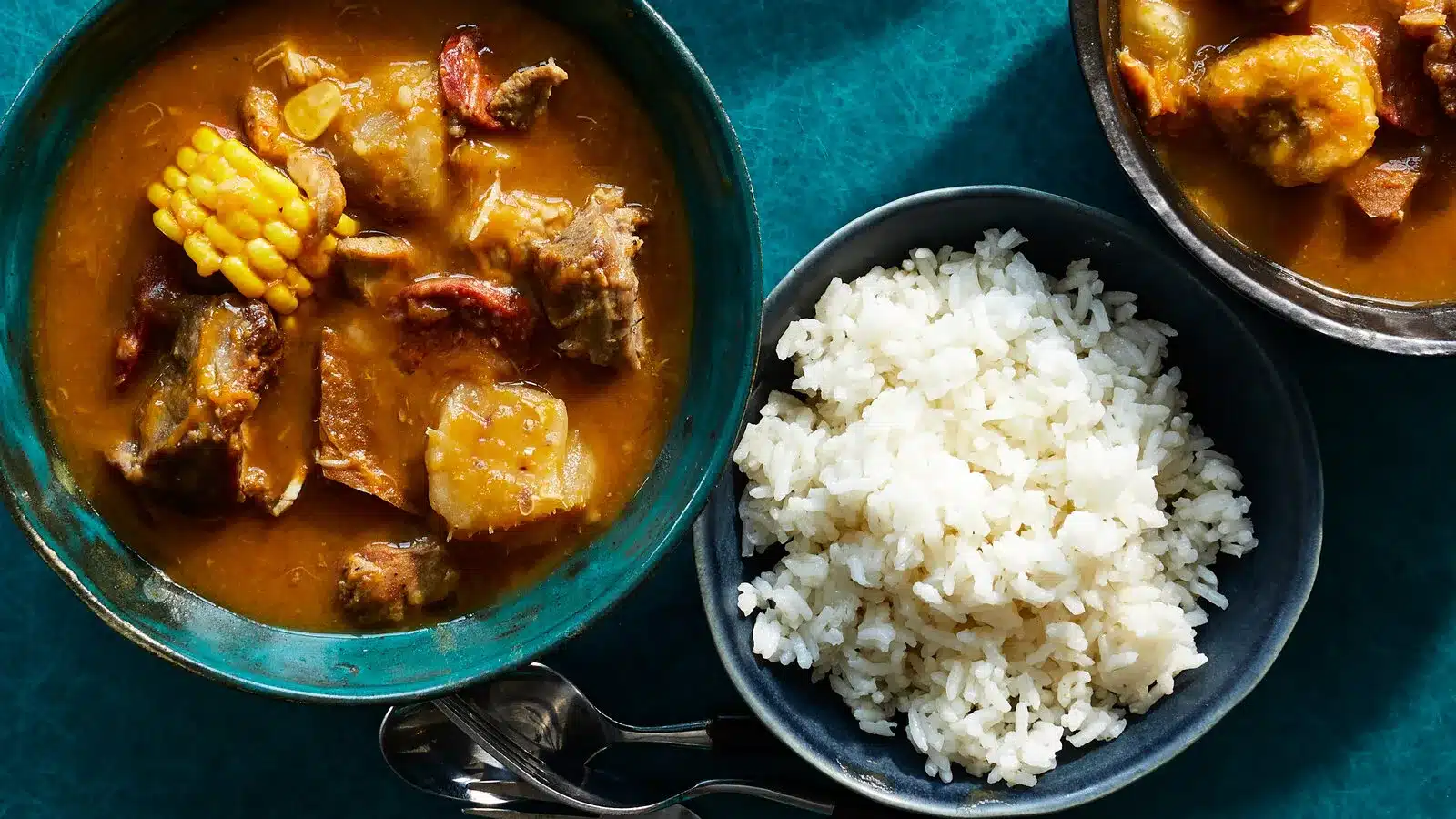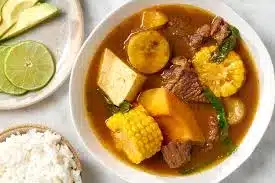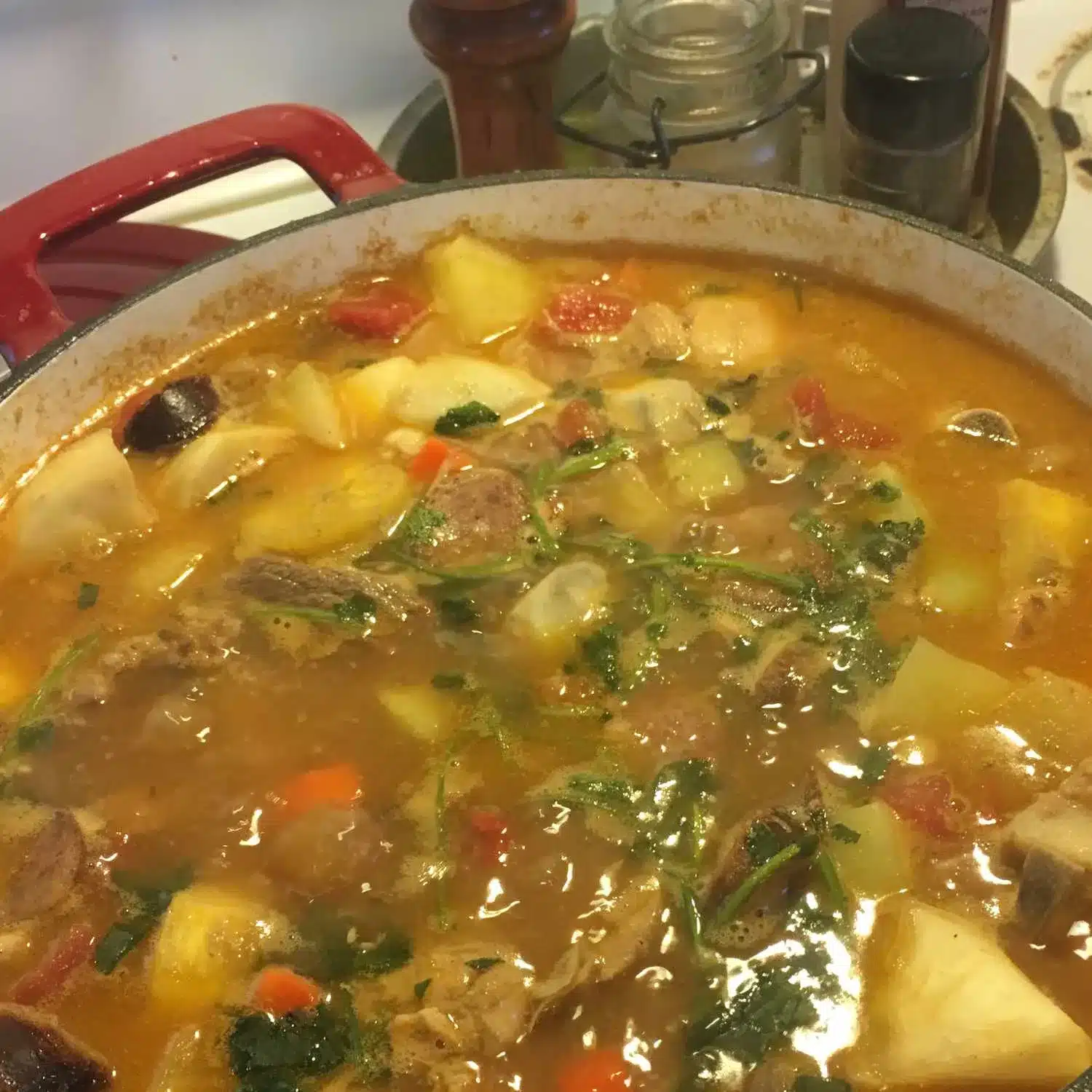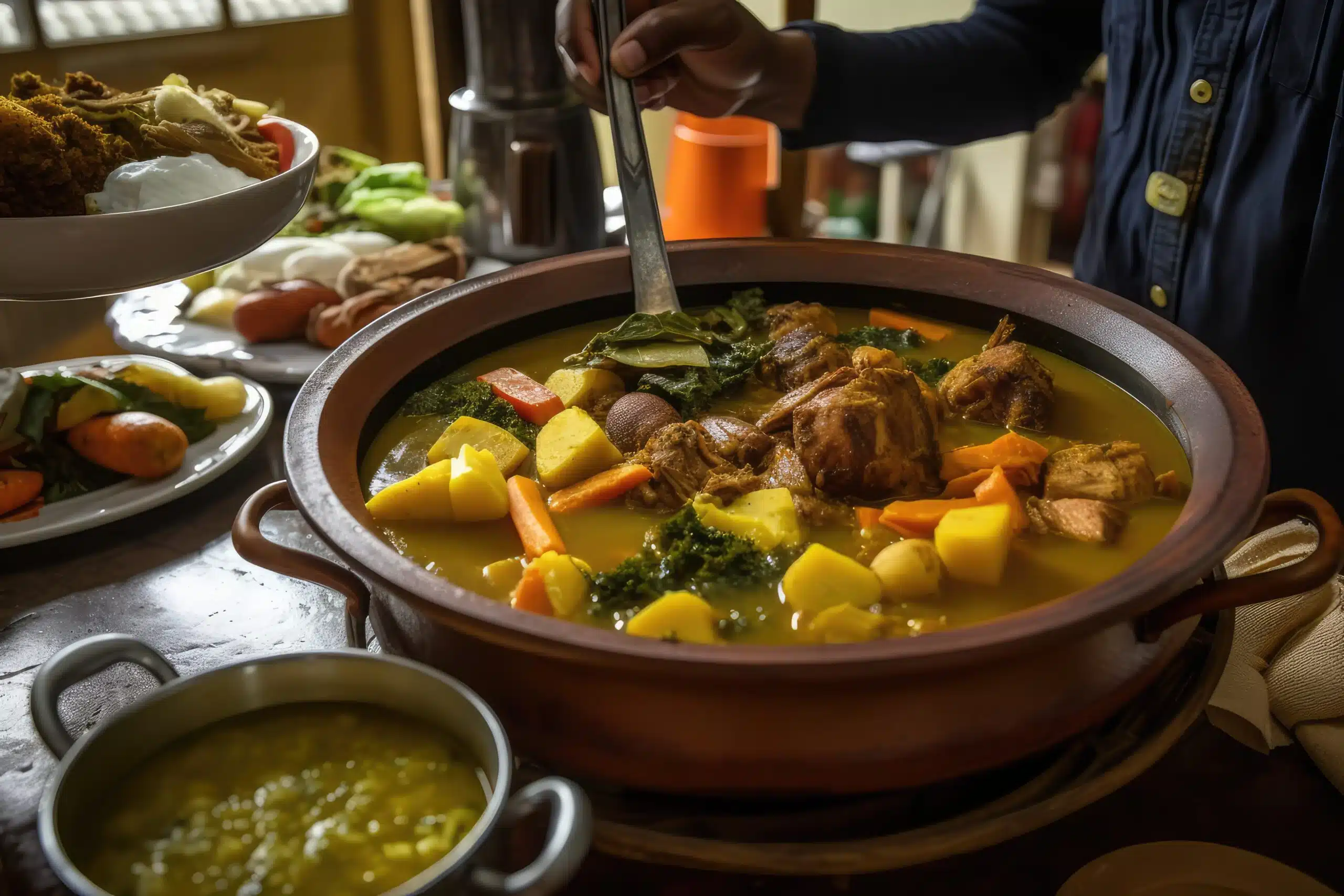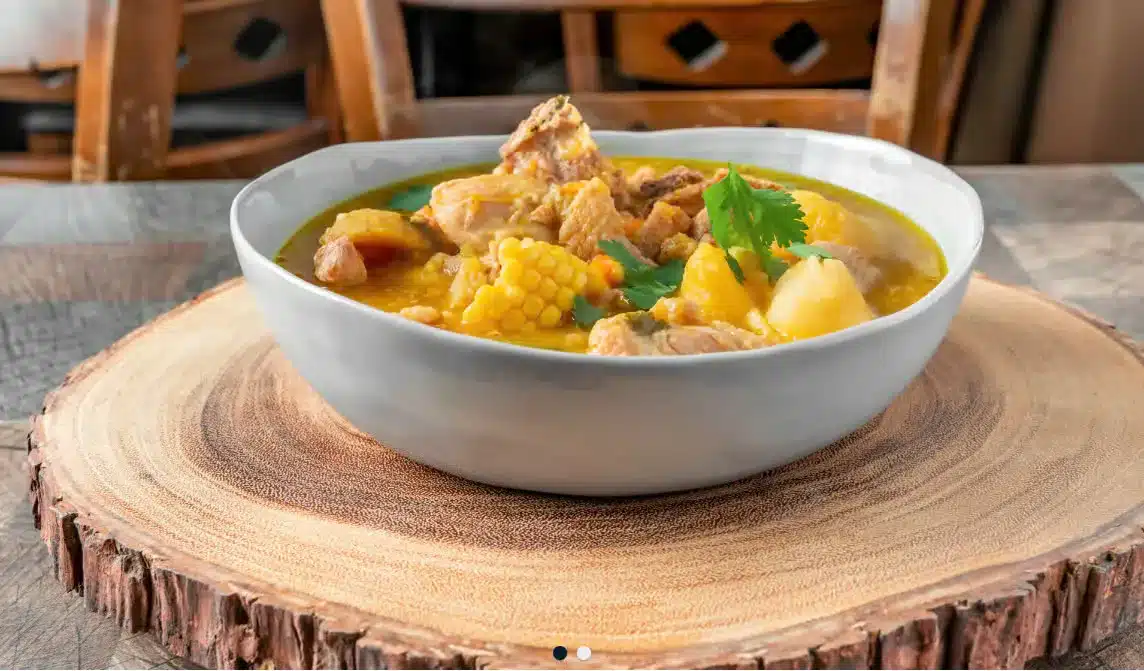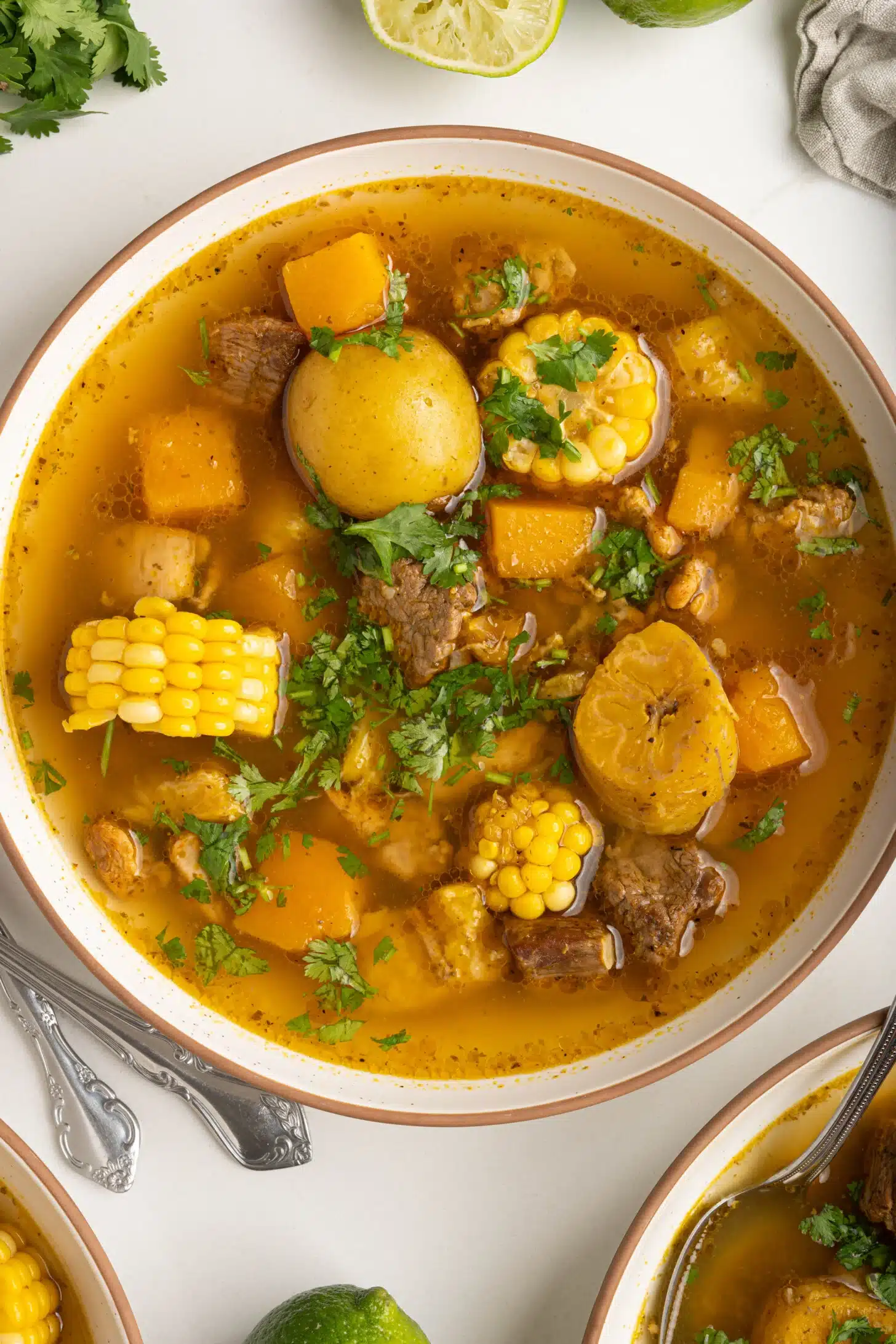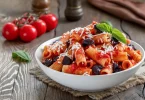Discover the rich flavors of Panamanian cuisine with our ultimate sancocho recipe guide, exploring its origins, ingredients, and cooking methods.
Contents
- 1 Introduction to Sancocho
- 2 The Origins of Panamanian Sancocho
- 3 Key Ingredients in Panamanian Sancocho
- 4 Traditional Cooking Methods
- 5 Step-by-Step Sancocho Recipe
- 6 Tips for Perfecting Your sancocho recipe
- 7 Regional Variations of sancocho recipe in Panama
- 8 Pairing Drinks with Sancocho
- 9 Health Benefits of Sancocho
- 10 sancocho recipe in Panamanian Culture
- 11 Modern Twists on Traditional Sancocho
- 12 Conclusion
- 13 Frequently Asked Questions About sancocho recipe
- 14 Resources for Further Exploration
Introduction to Sancocho
The rich aroma of a simmering pot of sancocho can transport you straight to Panama’s vibrant streets. As the national dish, sancocho holds a special place in the hearts of Panamanians, serving as a symbol of community and tradition.
Whether it’s a rainy day comfort meal or a celebratory dish during festivals, this hearty soup brings warmth and joy to every table. Understanding the sancocho recipe means delving into the cultural roots that make this dish so beloved across the country.
Definition and Cultural Significance
Sancocho is a traditional stew found across Latin America, each country adding its unique twist. However, the Panamanian sancocho stands out due to its simplicity and rich, flavorful broth.
This dish, usually made with chicken, yuca, corn, and culantro, is more than just a meal; it’s a cultural staple. It represents the diverse culinary influences that have shaped Panama, blending indigenous, African, and Spanish elements.
The preparation of sancocho Panama often brings families together, making it a dish not just for the stomach but for the soul.
Overview of Sancocho Variations Across Latin America
While sancocho Panama is characterized by its use of chicken and culantro, variations across Latin America showcase different ingredients and flavors. In Colombia, for instance, sancocho might include multiple types of meat like chicken, beef, and pork, along with a broader variety of root vegetables.
In the Dominican Republic, sancocho is often richer, combining seven different types of meat. Despite these variations, all sancocho versions share a common essence: a hearty, comforting stew designed to nourish and warm.
The Origins of Panamanian Sancocho
Historical Background
The history of Panamanian sancocho is deeply intertwined with the country’s colonial past. The dish is a result of the blending of indigenous cooking techniques with the culinary practices brought by the Spanish colonizers.
Over time, African slaves introduced their own flavors and ingredients, enriching the dish’s profile. This fusion of cultures over centuries has given birth to the sancocho recipe we know and love today.
Influences from Indigenous and African Cuisine
The indigenous people of Panama contributed the use of local ingredients like yuca and corn, which are staples in sancocho. African influences are evident in the use of spices and cooking methods.
The slow-cooking process, which allows flavors to meld together over time, is a hallmark of African cooking traditions. Together, these influences have created a dish that is both uniquely Panamanian and a testament to the country’s multicultural heritage.
Key Ingredients in Panamanian Sancocho
Main Proteins: Chicken, Pork, or Beef
The traditional sancocho recipe in Panama predominantly uses chicken as the main protein. The chicken is typically left on the bone, adding depth to the broth.
In some regional variations, pork or beef is used, offering a richer taste. However, chicken remains the favorite due to its lightness, which allows the other ingredients to shine through.
Essential Vegetables: Yuca, Corn, Potatoes
No sancocho is complete without a generous helping of yuca. This starchy root vegetable absorbs the flavors of the broth, making each bite a burst of flavor. Corn, often cut into rounds, adds sweetness and texture, while potatoes provide body to the soup, making it a satisfying and complete meal.
Spices and Seasonings: Culantro vs. Cilantro
A defining feature of Panamanian sancocho is the use of culantro, a herb similar to cilantro but with a more robust flavor. Culantro imparts a distinctive taste that sets this dish apart from other soups and stews. Some cooks may substitute cilantro if culantro is unavailable, but the latter is preferred for an authentic flavor.
Broth Base: Water vs. Stock Options
The broth is the heart of any sancocho recipe. While some cooks opt for a simple water base, others use chicken or vegetable stock for added richness. The choice of broth can significantly impact the final flavor, with stock providing a deeper, more layered taste.
Traditional Cooking Methods
One-Pot Cooking Technique
The beauty of sancocho Panama lies in its simplicity. Traditionally, all ingredients are cooked together in a single pot, allowing the flavors to meld naturally.
This method not only enhances the taste but also makes the cooking process more straightforward, a testament to its origins as a practical, nourishing meal.
Importance of Slow Cooking for Flavor Development
Sancocho is not a dish to be rushed. Slow cooking allows the flavors to develop fully, with each ingredient contributing to the overall profile of the dish. The longer the soup simmers, the more the flavors meld, creating a harmonious and deeply satisfying taste.
Alternative Cooking Methods: Pressure Cooker and Instant Pot
For those short on time, a pressure cooker or Instant Pot can be used to make sancocho. These methods can significantly reduce cooking time while still delivering a flavorful dish. However, nothing quite compares to the depth of flavor achieved through traditional slow-cooking methods.
Step-by-Step Sancocho Recipe
Preparation of Ingredients
Begin by gathering all the ingredients: chicken pieces, yuca, corn, potatoes, culantro, garlic, onions, salt, pepper, and any additional spices you prefer. Preparing all ingredients beforehand makes the cooking process smooth and ensures that flavors are layered properly.
Cooking the Broth
Start by sautéing onions and garlic in a large pot until they are fragrant. Add the chicken pieces and sear them to lock in the flavors. Next, pour in water or chicken stock and bring the mixture to a boil. This base will be the foundation of your sancocho.
Adding Vegetables at the Right Time
Once the broth is simmering, add the yuca and potatoes. These vegetables require more time to cook and absorb flavors. Midway through cooking, add the corn. The vegetables should be tender but not mushy, maintaining a slight bite that complements the softness of the chicken.
Final Touches and Serving Suggestions
Add fresh culantro to the pot in the last 10 minutes of cooking to infuse the broth with its distinctive flavor. Taste and adjust the seasoning as needed. Serve sancocho hot, traditionally accompanied by white rice and slices of ripe avocado for a complete meal.
Tips for Perfecting Your sancocho recipe
Balancing Flavors: Adjusting Salt and Spice Levels
Achieving the perfect flavor balance is key to a successful sancocho recipe. Start with a moderate amount of salt and adjust as the soup simmers. A touch of pepper can enhance the taste, but be careful not to overpower the delicate flavors of the chicken and vegetables.
Achieving the Right Consistency
The ideal sancocho should have a broth that is flavorful and slightly thickened by the starch from the potatoes and yuca. If the soup is too thin, let it simmer uncovered to reduce and concentrate the flavors. Conversely, if it’s too thick, add a bit more stock or water.
Presentation Ideas: Serving with Rice or Avocado
Sancocho is traditionally served with white rice, which helps soak up the delicious broth. Adding slices of ripe avocado not only enhances the presentation but also adds a creamy texture that complements the soup. Fresh lime wedges on the side can provide a zesty contrast.
Regional Variations of sancocho recipe in Panama
Sancocho de Gallina: A Closer Look
One popular variation in Panama is sancocho de gallina, which uses free-range chicken. This type of chicken has a firmer texture and richer flavor, making the dish even more satisfying. The use of free-range chicken is a nod to the rural roots of sancocho, where families often raise their own poultry.
Coastal vs. Highland Versions
Panama’s diverse geography has given rise to regional variations of sancocho. Coastal areas may incorporate seafood into their version, adding a different dimension to the flavor. In contrast, highland versions might include more root vegetables, making them heartier to suit the cooler climate.
Unique Ingredients Used in Different Regions
Some regions add ingredients like ñame (a type of yam) or otoe (taro root), providing different textures and flavors. These local variations highlight the adaptability of the sancocho recipe and its ability to reflect the ingredients available in different parts of the country.
Pairing Drinks with Sancocho
Traditional Beverages: Chicha and Seco
To complement Panamanian sancocho, consider traditional Panamanian beverages like chicha, a sweet, fruity drink, or seco, a potent sugarcane-based liquor. Chicha’s sweetness balances the savory broth, while seco adds a sharp, warming contrast.
Wine Pairing Suggestions
For those who prefer wine, a crisp white wine like Sauvignon Blanc pairs well with sancocho recipe. Its acidity cuts through the richness of the soup, refreshing the palate with each sip. Alternatively, a light red wine with low tannins can also be a good match.
Non-Alcoholic Options for Family Gatherings
Lemonade or iced tea makes a refreshing non-alcoholic pairing with sancocho recipe. The tartness of lemonade can brighten the flavors of the soup, while iced tea offers a smooth, mellow contrast. Both options are family-friendly and widely enjoyed.
Health Benefits of Sancocho
Nutritional Value of Key Ingredients
Sancocho is not only delicious but also packed with nutrients. Chicken provides lean protein, essential for muscle repair and growth. Yuca and potatoes offer carbohydrates, the body’s primary energy source. Corn adds fiber, supporting digestive health, while culantro is rich in vitamins A and C.
Comfort Food Benefits: Aiding Recovery and Nourishment
Beyond its nutritional content, sancocho is often considered a comfort food. Its warm, hearty nature makes it a go-to dish for those recovering from illness or needing a boost of energy. The nourishing broth helps to hydrate and provide essential nutrients, aiding in recovery.
sancocho recipe in Panamanian Culture
Celebratory Occasions and Traditions
Panamanian sancocho is a dish often enjoyed during celebrations and festive occasions. Whether it’s a national holiday, a family gathering, or a religious festival, sancocho recipe is a staple, bringing people together over a shared love of food.
Sancocho as a Family Dish
In Panama, cooking sancocho is often a family affair, with everyone contributing to the preparation. This communal cooking experience strengthens family bonds and ensures that culinary traditions are passed down through generations.
Its Role in Community Gatherings and Festivals
Beyond the family circle, sancocho recipe plays a vital role in community events. It is commonly served at public gatherings, where large pots of the soup feed crowds, symbolizing unity and shared cultural heritage.
Modern Twists on Traditional Sancocho
Vegan and Vegetarian Alternatives
While traditional sancocho is meat-based, there are vegan and vegetarian alternatives that are equally delicious. Replace chicken with hearty vegetables like mushrooms or legumes, and use vegetable stock instead of chicken stock. These versions retain the essence of sancocho recipe while catering to different dietary preferences.
Fusion Recipes: Incorporating Global Flavors
Chefs and home cooks alike are experimenting with sancocho, incorporating global flavors. Adding ingredients like coconut milk, lemongrass, or even curry spices can provide a fresh take on this classic dish, showcasing its versatility.
Creative Garnishes and Add-Ins
Elevate your sancocho by experimenting with garnishes. A dollop of sour cream, a sprinkle of freshly chopped herbs, or even a dash of hot sauce can enhance the flavor profile. For added texture, consider topping the soup with crispy plantain chips or toasted bread crumbs.
Conclusion
Sancocho is more than just a dish; it’s a culinary journey into the heart of Panama. From its rich history to its comforting flavors, sancocho offers a taste of Panamanian culture in every spoonful.
By exploring the various sancocho recipes, you not only enjoy a delicious meal but also connect with a tradition that has been cherished for generations. So gather your ingredients, invite your loved ones, and let the magic of sancocho bring warmth and joy to your table.
Frequently Asked Questions About sancocho recipe
What is the best meat for Sancocho?
While chicken is the most common choice, you can use beef, pork, or even seafood depending on your preference. Free-range chicken is highly recommended for its flavor.
Can I make Sancocho ahead of time?
Yes, sancocho recipe can be made ahead of time. In fact, it often tastes better the next day as the flavors continue to meld. Store it in the refrigerator and reheat before serving.
How do I store leftovers properly?
Store leftover sancocho recipe in an airtight container in the refrigerator for up to three days. For longer storage, freeze the soup in portion-sized containers for up to three months. Thaw in the refrigerator before reheating.
Resources for Further Exploration
Recommended Cookbooks on Latin American Cuisine
- The Latin American Cookbook by Virgilio Martinez
- Gran Cocina Latina: The Food of Latin America by Maricel E. Presilla
- Ceviche: Peruvian Kitchen: Authentic Recipes for Lomo Saltado, Anticuchos, Tiraditos, Alfajores, and Pisco Cocktails by Martin Morales
Online Communities and Forums for Home Cooks
- Reddit’s r/Cooking
- Chowhound’s Home Cooking Community
- Serious Eats Talk Forum
Cooking Classes Focused on Panamanian Cuisine
- Look for local cooking schools that offer Latin American cuisine classes.
- Online platforms like Udemy and MasterClass may also offer courses focused on Panamanian and Latin American cooking.

